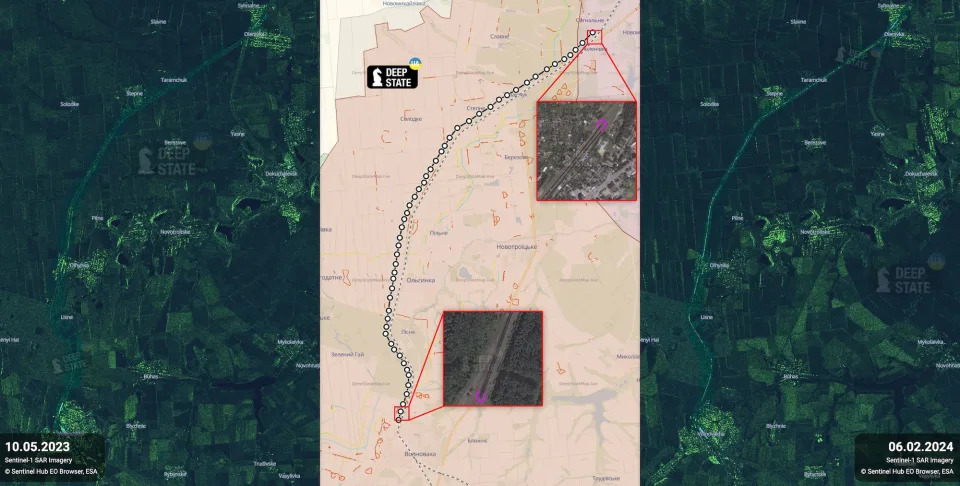Business Insider
Russia appears to have built a bizarre, 18-mile fortification from disused freight trains to protect itself in Ukraine, analysts say
Thibault Spirlet – February 12, 2024
- Russia has built an 18-mile defensive line using more than 2,000 railway carriages, a report says.
- DeepState, a Telegram analytics channel, said it’s a new Russian defensive line.
- But the Institute for the Study of War said the freight cars may have other purposes.
Russia has built an 18-mile defensive line using more than 2,000 railway cars, according to a new report.
DeepState, a Telegram analytics channel, drew the assessment in a Telegram post on Sunday, relying on satellite imagery taken over occupied Ukraine.
The pair of satellite images, dated May 10, 2023, and February 6, 2024, show that Russian forces have constructed a continual train car line that runs from Olenivka, south of the city of Donetsk, to Volnovakha and north to Mariupol, it said.
The line’s construction started in July 2023 and it can be viewed as a separate line of Russian defense, DeepState said.
While it is difficult to assess how effective the structure is, it added that it would be difficult to damage and that breaking through such obstacles is extremely hard.

The Institute for the Study of War also picked up on the report in an intelligence update on Sunday.
However, the ISW had a more cautious take, saying the 30-kilometer-long barrier is “possibly” being built to serve as a defensive line against future Ukrainian assaults.
Russia may also have put the freight cars together for other purposes, it said.
Russia has constructed heavily fortified defenses along much of the vast front in Ukraine, using anti-tank ditches, mazes of trenches, ‘dragon’s teeth’ barricades, and minefields.
It’s been one of Russia’s key successes in the war, and has proved effective in frustrating Ukraine’s advances along the front lines.
Retired Brig. Gen. Mark Kimmitt, who served for decades as a US Army officer and also as deputy director of operations for coalition forces in Iraq, broke down why it was so difficult for Ukrainian forces to break through Russia’s defenses last summer.
In a Wall Street Journal video published in July, Kimmitt said that Russia’s defenses are stacked one on top of the other, resulting in up to eight layers of dangerous fortifications.
This means that breaching them comes at great human and material cost, he said.
